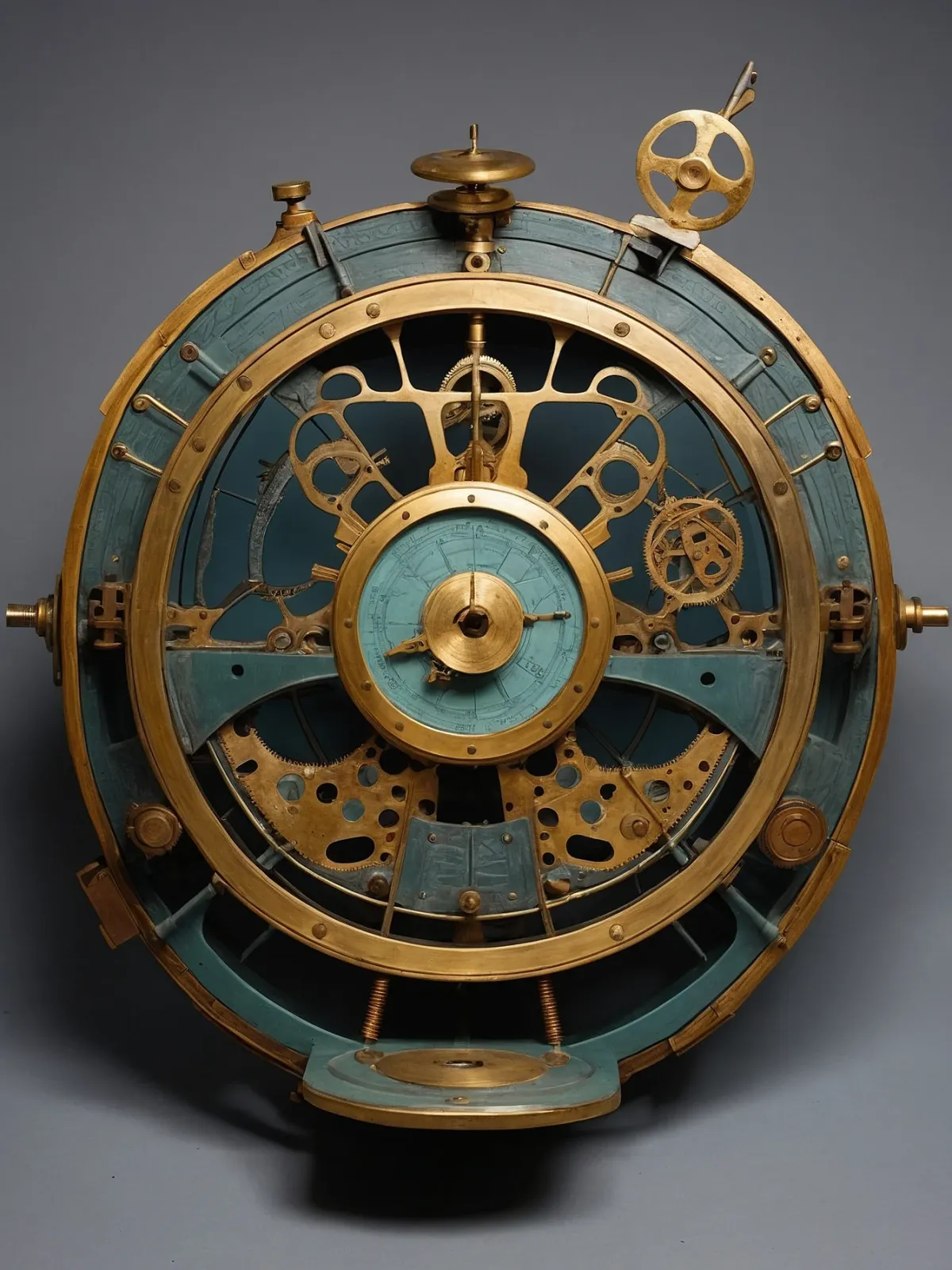The Chronomancer's Sphere

A marvel of peculiar Victorian engineering, “The Chronomancer’s Sphere” stands as a testament to the unsettling genius of Felix Nox. Known for his eccentric inventions and dabbling in the occult sciences, Nox is an enigmatic figure shrouded in mysteries and whispers. While many thought him mad, his works tell tales of transcendence beyond our mortal understanding. This piece, crafted from polished brass interwoven with mysterious teal wood and covered in cryptic symbols, invites viewers into a hypnotic dance of gears and mechanisms that seem almost too advanced for its time.
Nox claimed that this device could manipulate time itself, bending its fabric to explore epochs long past or yet to come. According to persistent rumors among fringe historians and esoteric circles, it was a gift from The Cadaverous Ones—a group supposedly maintaining balance between realms. It was during a fateful evening in 1903 when Jonathan Weaver, a scrupulous archivist for the British Museum, stumbled upon the intricate chronometer. Mesmerized by its mechanical perfection and cryptic beauty, Weaver couldn’t resist cataloging it under “unexplained artifacts.”
Weaver’s curiosity morphed into obsession as he tirelessly dissected every cog and dial of the Chronomancer’s Sphere over sleepless nights. Seeking understanding, he found visions instead—hallucinations of verdant landscapes stretching across millennia, merged with terrifying dystopian futures where humanity struggled against unseen invaders. Each vision dragged him deeper into an abyss until he discovered a hidden compartment revealing Nox’s last worn letter, inscribed with warnings about meddling with forces beyond reason.
“This device breathes life into dreams best left unearthed.”
- Elara Brightwood, Occult Historian
Despite the ominous warning, the foolhardy archivist activated the machine using instructions barely legible due to aging parchment decay. What emerged wasn’t just more vivid hallucinations or unimaginable horror but an awakening—a profound, indifferent cruelty. The universal machinery exposed the grandeur and fragility of existence, distorting both pleasure and dread.
As minutes blended into eons, an irreversible metamorphosis overtook Weaver, transforming him into an amalgamated being—partly himself, partly elsewhere. He became a stateless flowing essence, transcending human limitations and embodying an eternal flux. This fusion encompassed multiple timelines and splinter realities, reshaping his consciousness entirely.
To this day, observers lingering before The Chronomancer’s Sphere testify to its magnetic captivation, evoking haunting truths and blending awe with formidability. The piece entices introspection, confronting modern souls with the vastness and ephemerality of existence. It offers glimpses of personal transformations and universal mysteries, becoming a contemplative artifact that challenges our understanding of time and reality.




